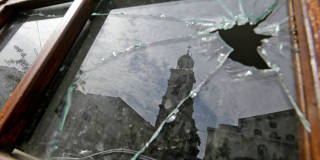OnPoint Subscriber Exclusive
Longer Reads provide in-depth analysis of the ideas and forces shaping politics, economics, international affairs, and more.

Anatomy of a Massacre
In studying inter-communal violence, there is a tendency to over-emphasize the ethnic and religious causes of conflict, while ignoring underlying social and economic factors. A nuanced approach that recognizes historical lessons – and their limits – is essential to guide reconciliation and long-term stability.
TEL AVIV – At the “end of history,” it seems, come genocide, ethnic cleansing, and a seismic explosion of tribalism and identity politics. These feral forces, and the socioeconomic tensions that often incite them, have time and again shattered nations, empires, and international politics. What can history teach us about preventing, and recovering from, such atavistic moments?